I have the below df:
df <- data.table(user = c('a', 'a', 'a', 'b', 'b')
, spend = 1:5
, shift_by = c(1,1,2,1,1)
); df
user spend shift_by
1: a 1 1
2: a 2 1
3: a 3 2
4: b 4 1
5: b 5 1
I am looking to create a lead lag column only this time the n parameter in data.table's shift function is dynamic and takes df$shiftby as input. My expected result is:
df[, spend_shifted := c(NA, 1, 1, NA, 4)]; df
user spend shift_by spend_shifted
1: a 1 1 NA
2: a 2 1 1
3: a 3 2 1
4: b 4 1 NA
5: b 5 1 4
However, with the below attempt it gives:
df[, spend_shifted := shift(x=spend, n=shift_by, type="lag"), user]; df
user spend shift_by spend_shifted
1: a 1 1 NA
2: a 2 1 NA
3: a 3 2 NA
4: b 4 1 NA
5: b 5 1 NA
This is the closest example I could find. However, I need a group by and am after a data.table solution because of speed. Truly look forward to finding any ideas.
